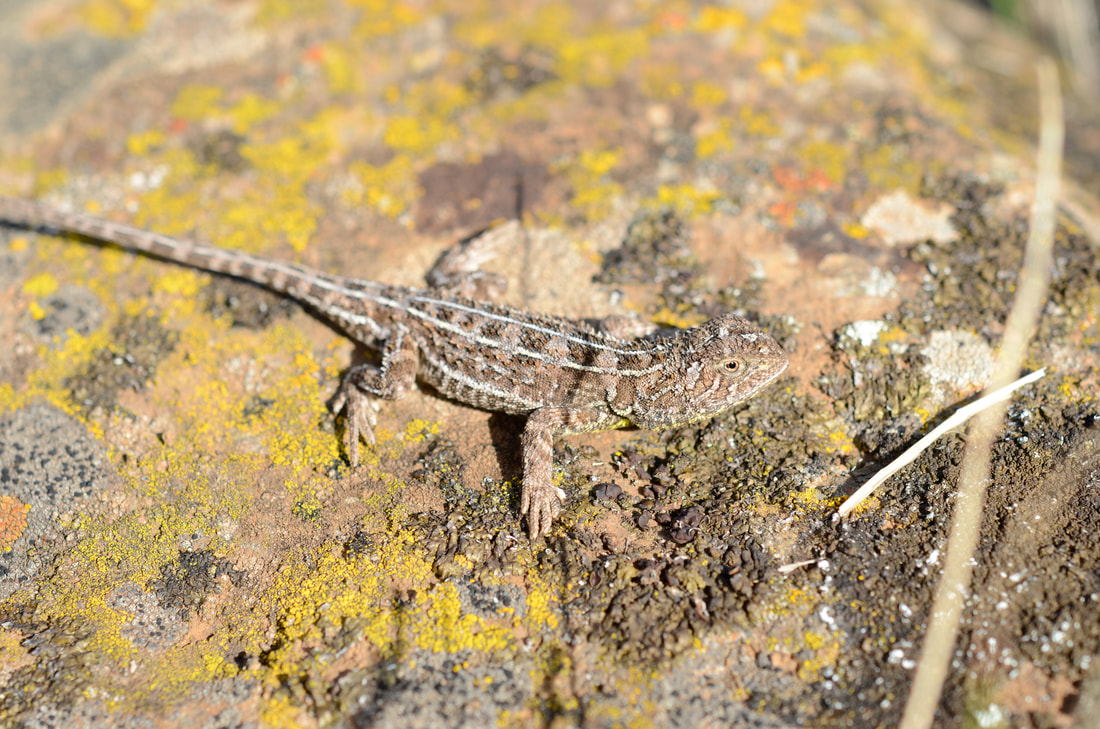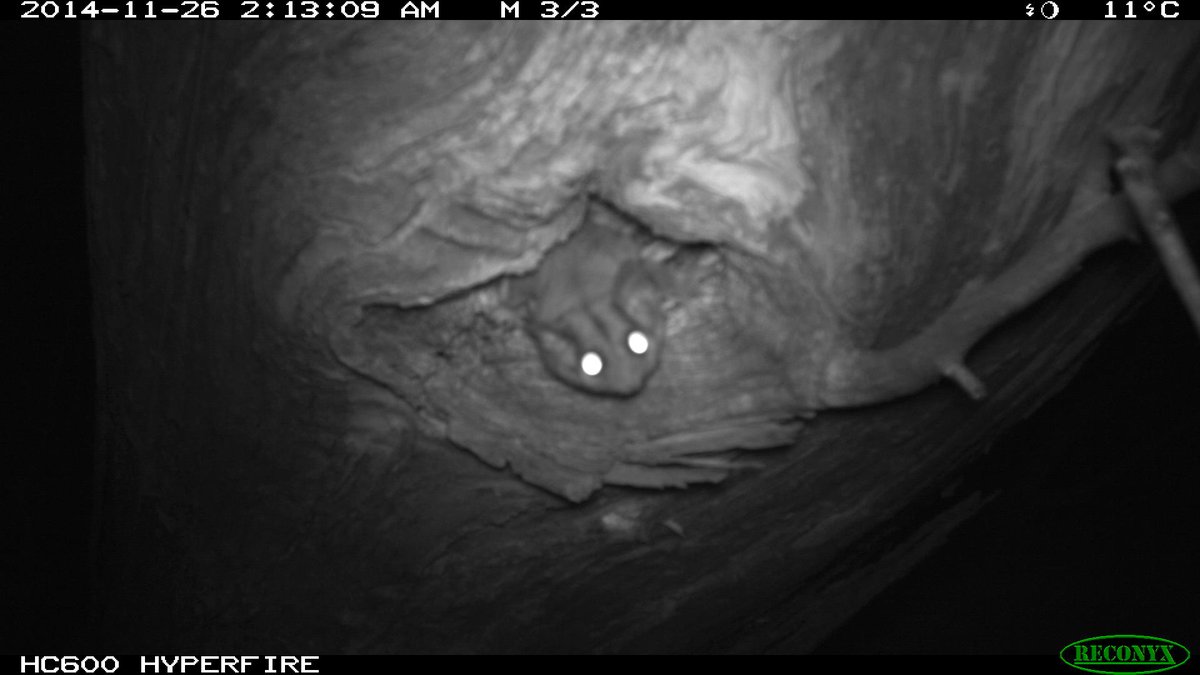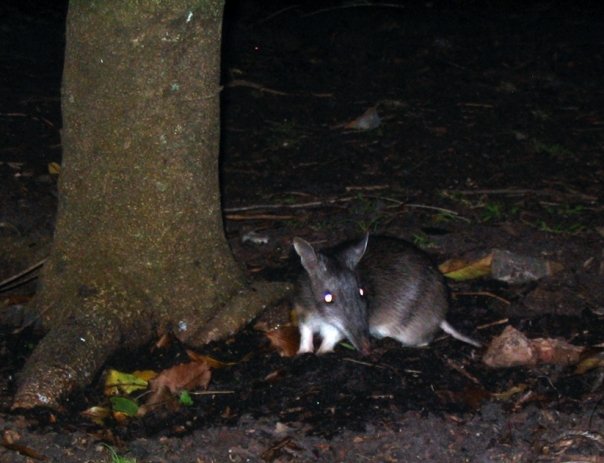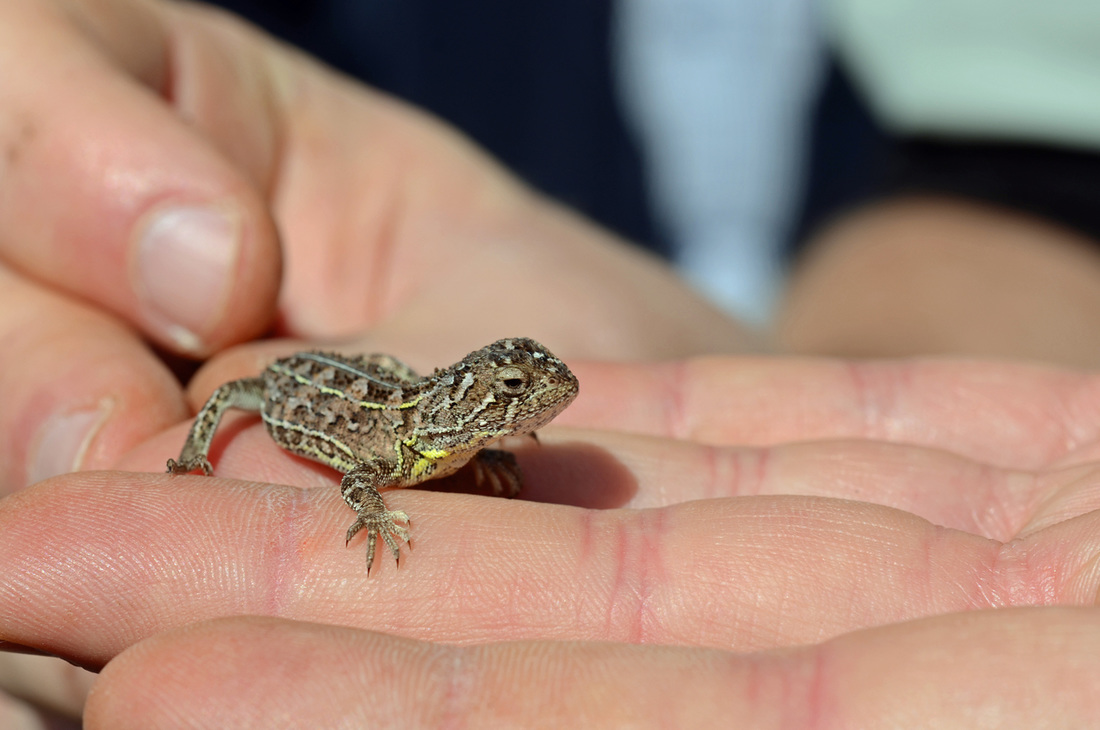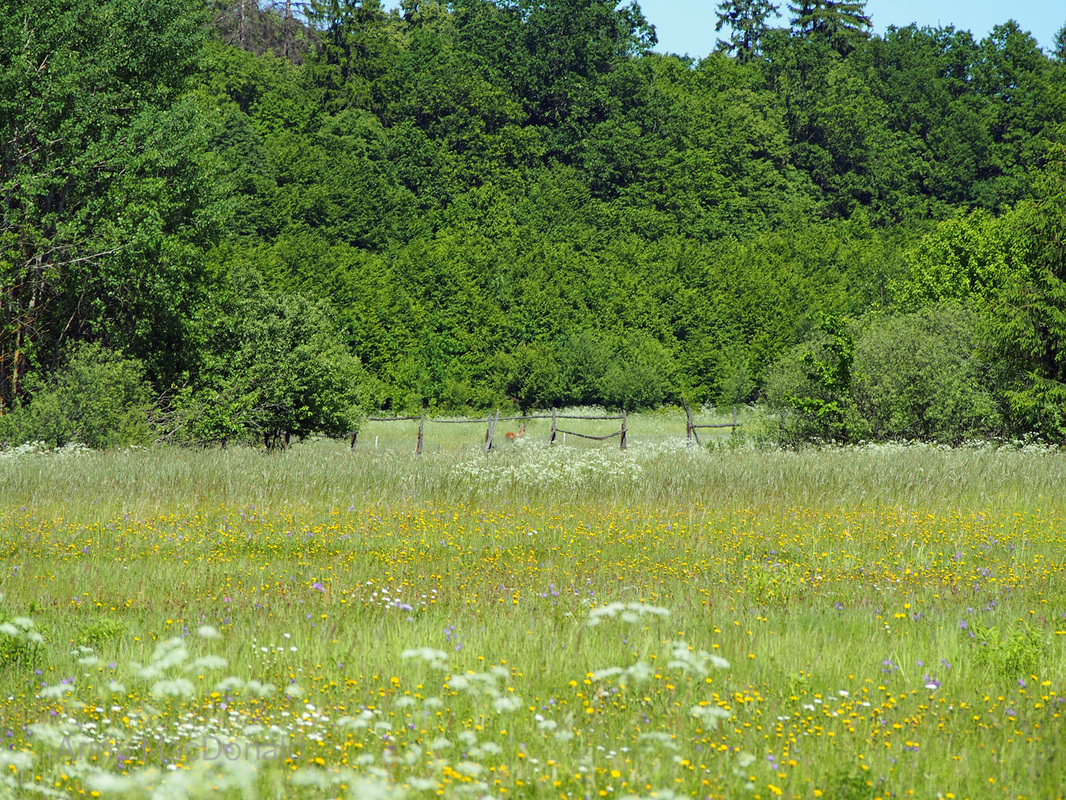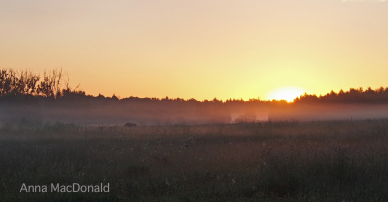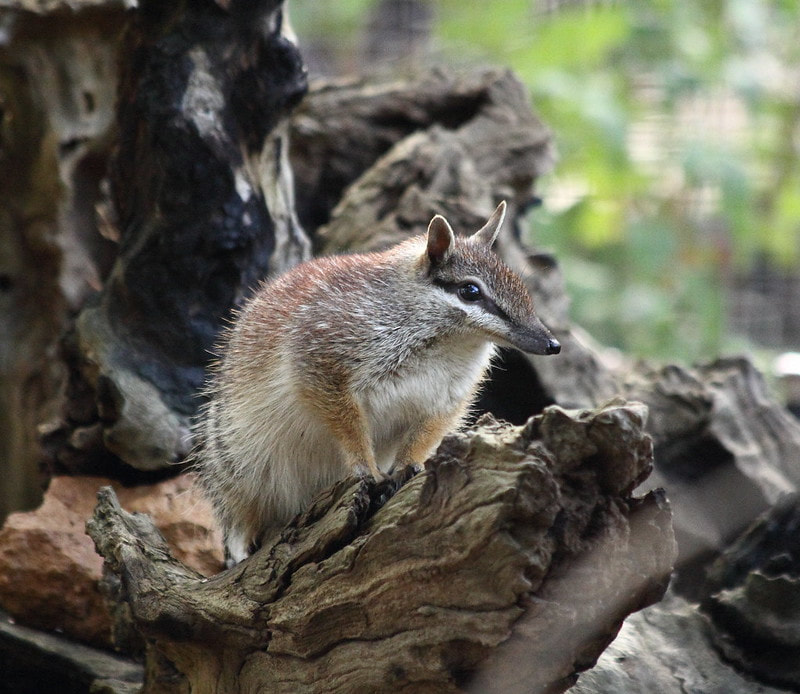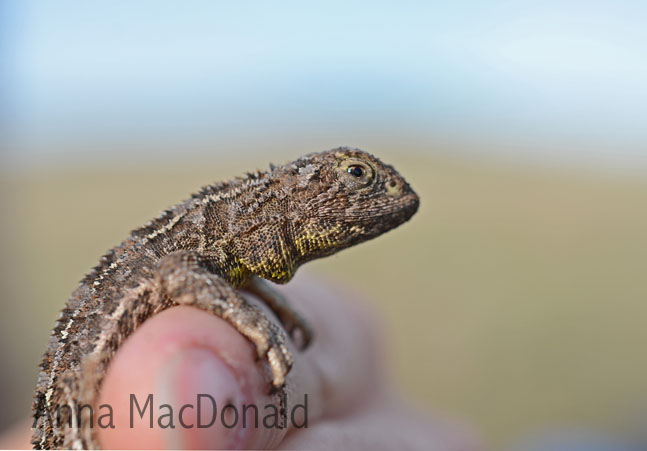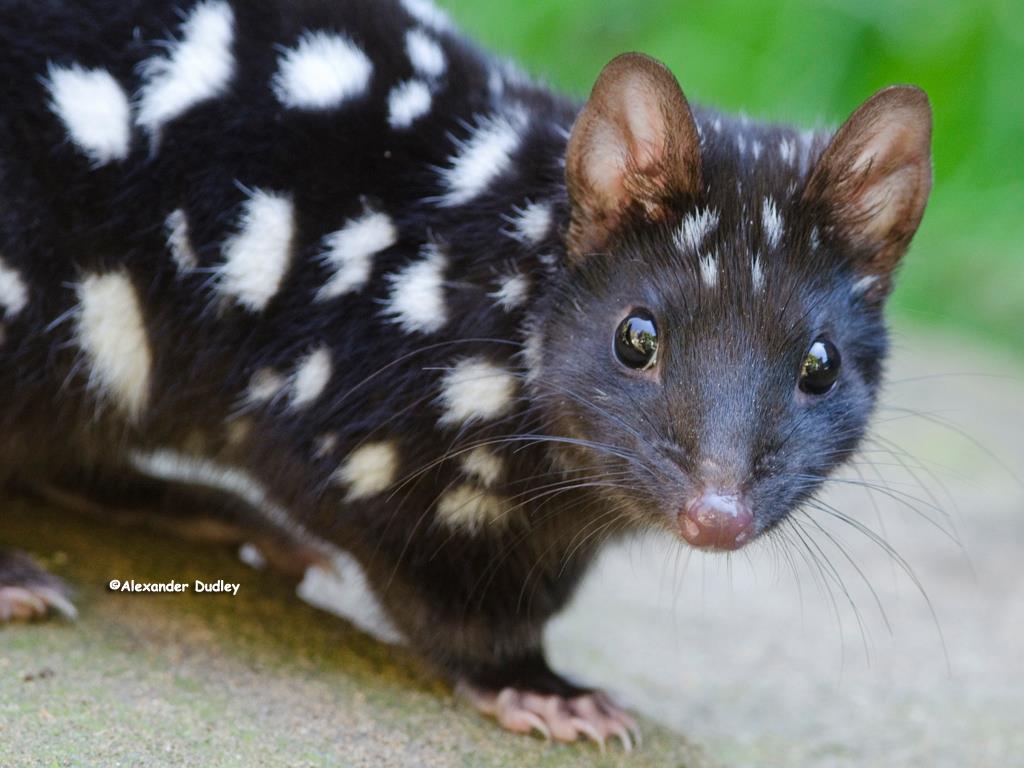Anna MacDonaldI'm a biologist with interests in genetics, conservation, ecology, invasive species, and wildlife management. Archives
May 2019
Categories
All
|
Back to Blog
Click here to read the full post at WildlifeSNPits I’ve used some of these photos in previous posts (here and here), but now I need to post an update. This little dragon is now known as the Monaro grassland earless dragon.
I’m excited to be a co-author on the paper, published last week in Royal Society Open Science (open access), that describes this species. This research combines several methods (phylogeography, phylogenomics, external morphology, micro X-ray CT scans) to review the grassland earless dragons of south-eastern Australia. It also shows how historic museum specimens can be important to understanding current biodiversity...
0 Comments
Read More
Back to Blog
Click here to read the full post at WildlifeSNPits.
I’m a fan of celebrating conservation success stories and sharing conservation optimism. In fact I’ve written about this before. Today, I want to share some wonderful teaching resources, that also highlight some reasons for hope in wildlife conservation. A little while back, I asked twitter to recommend short videos about mammal conservation in Australia, to include in lectures I was preparing. I wanted to illustrate some of the things that agencies need to think about when planning management strategies, and share some real examples of conservation actions with the students. Also, including videos of cute animals can make for a much more engaging lecture! Thanks to some lovely people I was sent links to a lot of interesting material. At the time I said I’d curate the list somewhere to make it easier for people to browse… and here it is. Please scroll down for links to a few videos about wildlife conservation, or with footage of threatened species. At this stage there is a strong focus on Australian mammals, but I’ll try to add links to other resources as I come across them. Feel free to share relevant resources with me… I know there are loads of other videos out there!
Back to Blog
Click here to read the full post at WildlifeSNPits. When is a native species also invasive, and how can we tell? This may seem a strange question, but it highlights the difficulty we sometimes face determining the boundaries of the area in which a species naturally occurs. Especially when detection is imperfect and those boundaries may change over time. Animals move. Plants move. Sometimes a species will naturally move into a new area, and we recognise this as a range expansion. At other times, a species may only be able to move to a new area with human help (deliberate or unintentional), and this may create a new, invasive population. Think about Australia. If I asked you to name an invasive mammal, you might choose a fox, cat, rabbit or pig. These are clearly not native to Australia. What if I ask you to name a native mammal? Maybe you chose a red kangaroo or a wombat? They are both native to Australia, but they are not native to ALL of Australia. If we were to move a native species to a new part of the country where it had never previously occurred, it may not find the resources it needs to survive, but if it did, we may have created a new invasive population – an invasive native... Photo credit Dejan Stojanovic
Back to Blog
Click here to read the full post at WildlifeSNPits
Bandicoots are fascinating creatures, but I suspect few people outside Australia and New Guinea have ever heard of them, well, unless you count Crash Bandicoot… They are probably best known in suburban Australia for infuriating gardeners with the conical pits, or “snout-pokes”, they dig whilst foraging for their food, which varies a little among species but usually includes fungi, plants and invertebrates. All Australian bandicoots are diggers, and a recent study estimated that a single southern brown bandicoot could dig as many as 45 foraging pits each day, meaning it has the potential to excavate around 3.9 tonnes of soil each year! That’s not bad for an animal that weighs less than 2 kilograms. In the not too distant past, bandicoots and their relatives could be found across almost the entire Australian continent, but theirs has been a sad story of extinction and decline since Europeans arrived. Today, thanks to habitat loss, competition from introduced rabbits, and predation by introduced cats and foxes (check out this camera trap photo, captured by Guy Ballard, of a feral cat with a bandicoot), many populations have diminished or disappeared. This may have real implications for the ecology of Australia: digging mammals seem to have important roles in soil turnover, water and nutrient cycling, and seedling recruitment, and the decline of these little diggers may have caused a deterioration in ecosystem function across the Australian continent. There is an awful lot more I could share about bandicoot ecology and evolution, but for now I want to concentrate on explaining what a bandicoot is, how many species there are, and where in the world they are found. I hope you’ll agree with me that as well as being amazingly cute (the official term is “bandicute”) they are also amazingly interesting...
Back to Blog
Click here to read the full post at WildlifeSNPits
This week, we have a new paper published online in the journal Conservation Genetics, with former Honours student Emma Carlson as lead author. The paper is titled “How many conservation units are there for the endangered grassland earless dragons?” Yes, that’s right, dragons! But not the fire-breathing sort. The grassland earless dragon (Tympanocyrptis pinguicolla) is a feisty, but tiny, agamid lizard from south-eastern Australia. As you can see from the pictures below, they can also be incredibly cute!
Back to Blog
Click here to read the full post at WildlifeSNPits
A couple of weeks ago, Stephanie asked if there is too much I in scicomm? This week, I’m asking whether there is too much doom and gloom in scicomm – or at least in scicomm related to wildlife conservation? Two things have led me to this post. In December, Emily asked me for my thoughts on new year’s resolutions related to wildlife and nature. I don’t usually make specific new year’s resolutions, but I do enjoy the opportunity to reflect on life at this time of year. So, I’ve been considering Emily’s question. Also late last year, I read this blog post, “It’s time to bring positivity back to conservation“. Here, Billy Geary argues that: “Conservation biologists have a responsibility to communicate facts that increase the awareness of environmental problems. But that isn’t enough. As advocates for conservation it is our responsibility to deliver messages that inspire action. It’s time to return positivity and hope to conservation.” I completely agree with him. As conservation scientists, whatever our aims and motivations, at the end of the day what we are “selling” is hope. Hope that in the future our favourite species, or community, or ecosystem, will persist and thrive.
Back to Blog
Click here to read the full post at WildlifeSNPits At first they were just shadows, dark impressions glimpsed through the mist. Is that really…? Could it be…? As we moved a little closer one of them turned to the east, to face the rising sun. His profile was unmistakable, the curved horns and humped shoulders proclaiming “bison”! And not just any bison, but free-ranging European bison, grazing in the meadows on the edge of the largest remnant of primeval forest in Europe. Without a doubt, this encounter during my visit to Poland in July was the stand-out wildlife experience of my year. With an emphasis on WILD. I suspect that experience is also what prompted this post, on the topic of rewilding. Rewilding. It’s an evocative word. It’s also a word that seems to turn up quite regularly in my news feeds at the moment. Every so often, friends ask me what I think about rewilding. To answer them I wanted to gain a better understanding of some of the issues surrounding rewilding, so I thought I’d do a little reading, then write a quick blog post on the topic. Well, that was a mistake! I’ve just emerged from one of those internet black holes, following one link after another, browsing paper after news article after blog, reading about some wonderful conservation projects, outlandish ideas (some good, some… less good) and first person perspectives from all sides of the debate. So what have I learned? Well… it’s complicated.
Back to Blog
Click here to read the full post at Wildlife SNPits:
So, I just made a discovery – November 7th 2015 is (or was) the first ever World Numbat Day! I had another post planned for this weekend, coincidentally about a different group of marsupials, but how could I go past this opportunity to write about numbats? I might be a little late to the festivities, but I don’t think the good folks atProject Numbat will mind too much. In this post I’m not going to share any tales of numbats glimpsed crossing the road in front of my car, or whilst I was hiking in the Australian bush, or even any of my own numbat photographs. There’s a simple reason for this. I’ve never actually seen a numbat. Yes, I know, my credibility is ruined! But wait… before you judge this alleged mammalogist too harshly… the sad truth is that the entire global population of wild numbats alive today would likely fit in my living room. I’m not saying they’d be comfortable stacked up like that, but with fewer than 1000 individuals left it’s not a big stretch of the imagination. The species is listed by the IUCN as endangered.
Back to Blog
Click here to read the full post at WildlifeSNPits:
September 7th marks the anniversary of a spectacular failure in Australian wildlife conservation. On this day in 1936, the last known thylacine, the largest marsupial carnivore and the only member of the family Thylacinidae, died in captivity in a Hobart zoo. Today, this day is recognised (I cannot bring myself to write “celebrated”) as Threatened Species Day. In July this year, the Australian Government launched a new Threatened Species Strategy at a summit in Melbourne. Many conservationists, myself included, have welcomed these plans, which include targets to improve the conservation status of 20 mammals, 20 birds and 30 priority plant species by the year 2020. Those who know me will know of my love for bandicoots, bilbies and quolls, so it should be no surprise that I’m delighted to see some of these species included in the new strategy. But still, in the days following the announcement I found myself having conversations with an assortment of friends and colleagues that went along the lines of “this is great but what about the threatened fish… or reptiles… or amphibians… or insects… or crustaceans…" If we are serious about wildlife conservation and the preservation of ecosystems, we can’t afford to focus only (or mostly) on the cute and the fluffy. We need to strive to conserve all wildlife and especially to prevent the loss of species that play important ecological roles. We need to save the pollinators, the predators, the detritivores, the ecosystem engineers… there are many of these and, although some may have fur or feathers, most of them don’t!
Back to Blog
Click here to read the full post at WildlifeSNPits:
It was about 4am on a dark Tasmanian morning and I was heading for Hobart airport for a 6am flight. I was driving along twisting country roads, taking it easy for the sake of ambush wombats and my rental car excess. Rounding a corner I saw a movement on the road, I saw spots, white on brown covering the body and tail, and I just had time for a glimpse of the whole creature as it turned to run for the bushes. And that was it! My first ever glimpse of a wild quoll! Several years would pass before my next, also in Tasmania, this time a female eastern quoll and her four half-grown young. Although two species of quoll still persist in Tasmania, they are no longer common near Canberra where I live. In fact, despite their former abundance, quolls are in decline across much of Australia, and conservation of these native marsupial predators and their ecological roles is paramount. As native predators such as quolls have disappeared from the Australian landscape, they have been replaced by introduced species. This is no coincidence: there is good evidence that cats and foxes have negative impacts on quolls, as well as many other Australian animals. So, if cats are bad for Australia, but quolls are good, what can we do to reduce the impacts of cats, and promote quoll conservation? |
 RSS Feed
RSS Feed
